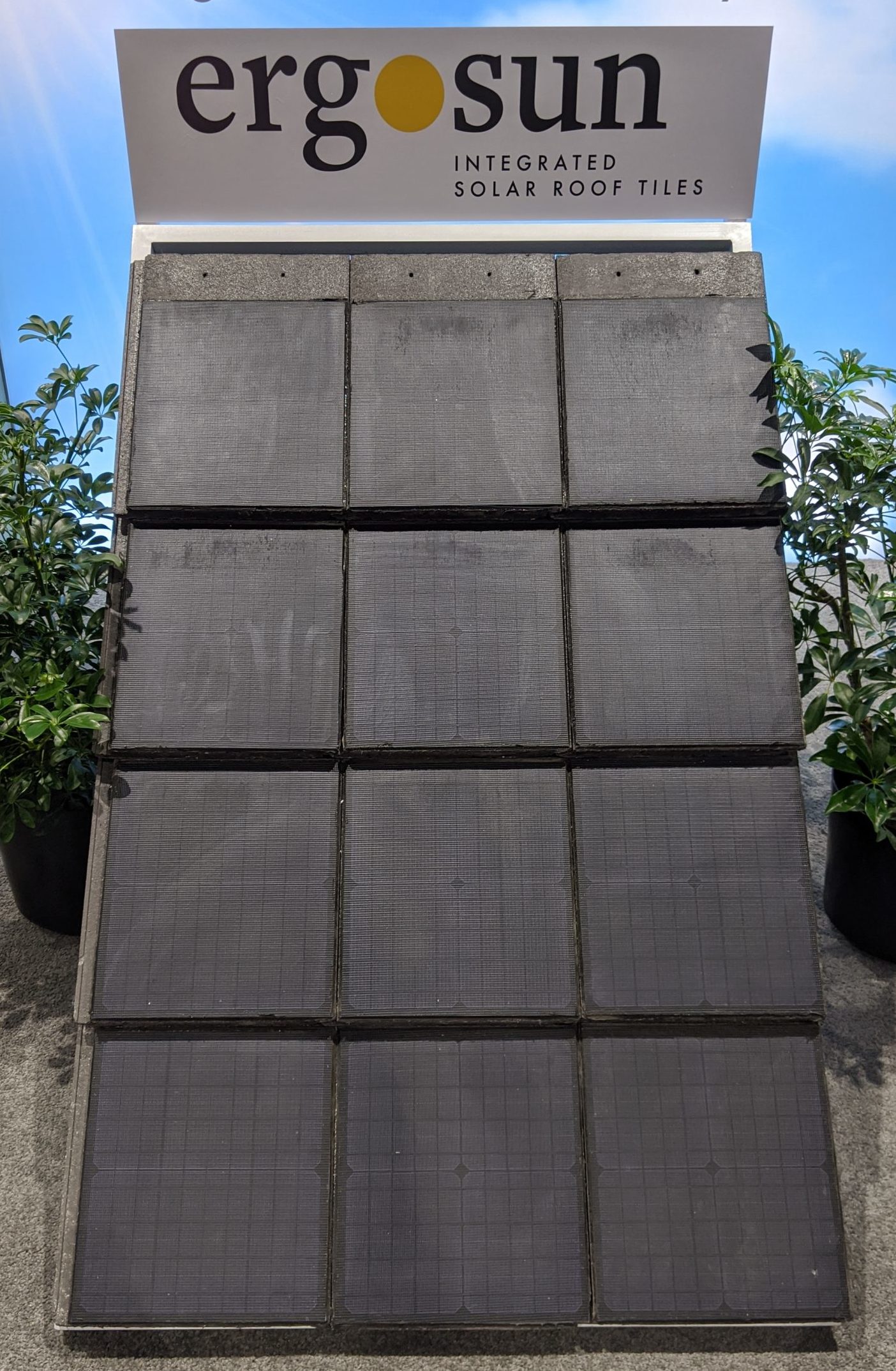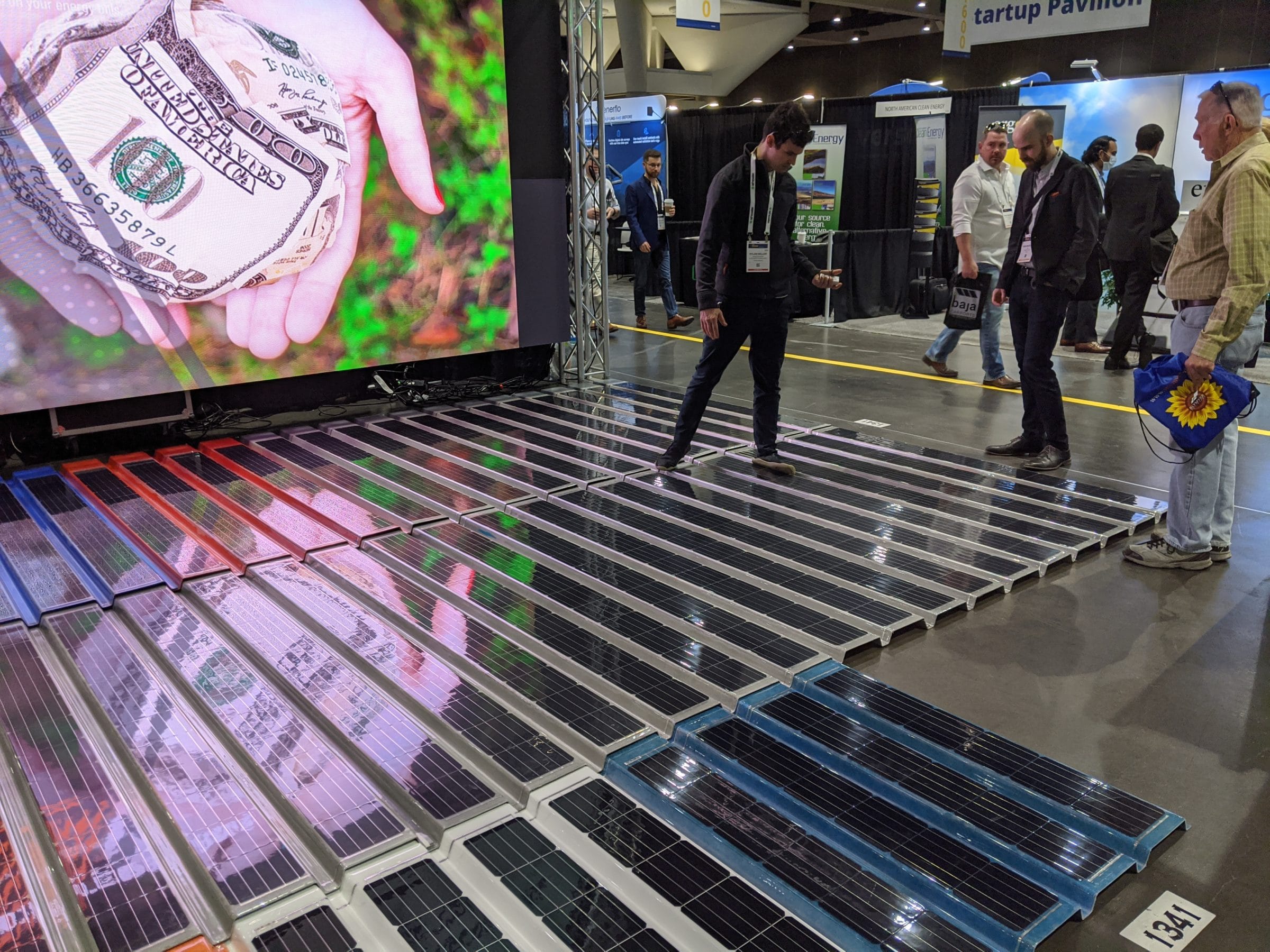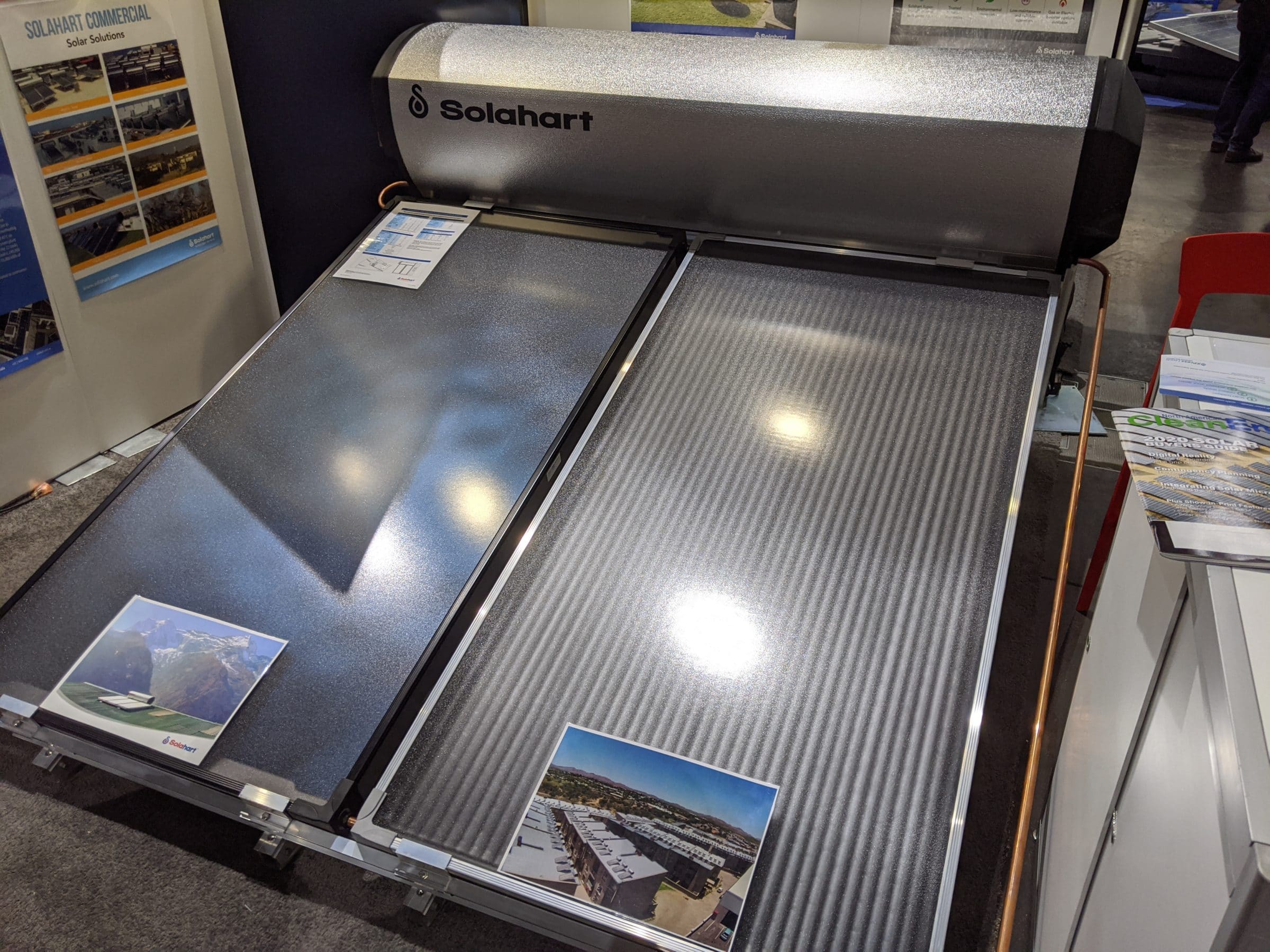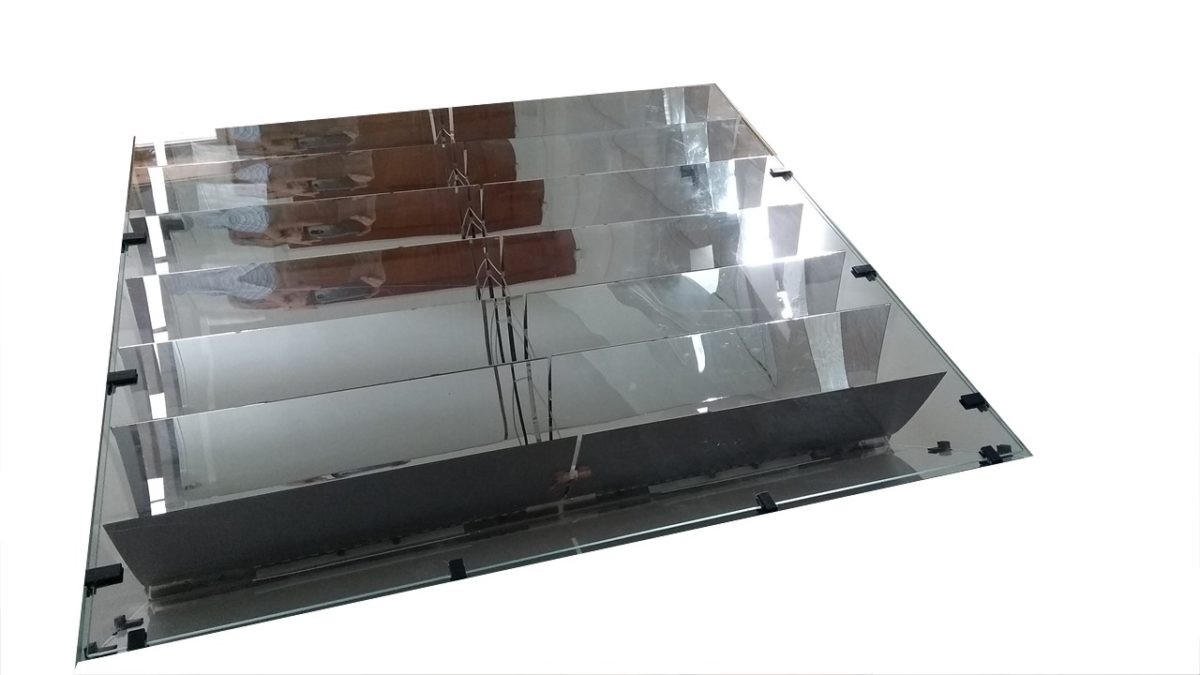ISP Solar’s solar module innovation can minimize the usage and cost of silicon and potentially cut the price of solar panels in half (MIT and NREL think minimizing silicon is valuable, as well).
The company uses 24.3% efficient solar cells, slices them into thin strips and surrounds the cells with reflective mirrors that can boost the overall panel efficiency to a projected 20%.
A small motor is used to track the sun — and because it’s employed with a low duty factor and kept in a sealed environment, its lifetime is extended to the required 25+ years for solar power modules, according to co-founder Dr. Suneet Singh Tuli.
The 552mm x 755mm solar panel in the article image is approximately one-fifth the size of a standard solar panel, and uses one-twentieth the amount of silicon as a standard 72-cell panel. It connects to standard commercial rooftop racking. The company is looking to offset the use of two diesel generators in First Nation territories in the coming months, and hopes to deliver real world data by the end of summer this year.
***
Recently, AE Solar released its Hot Spot-Free solar panel, which includes a diode in between each solar cell. This isolates the solar cells from each other, so that if a shadow hits the cell, it doesn’t reduce the output in the entire solar cell string.
Speaking with the AE Solar folks at the booth, they say this adds a few percentage points to the price of the unit, but might add 5% to 15% more electricity production over the course of a year. Check out this video from the floor of Intersolar:
Ergosun’s solar roof tile looks and feels like a black rubber square up close — you cannot tell it’s a solar power generator. The company defines it as a “solarized concrete roof tile.” Each of the individual tiles generate 15 W, and with a size of 298mm by 335 mm, its got a panel efficiency of just over 15%. Since the product is a solar panel and a roof — you’ll get a tax credit on your new roof.

Ecosolaroof makes a fiberglass metal roofing product with solar cells attached to the surface. In the image below you see the gentlemen at the booth showing how you can walk on the product, but be conscious of where you place your feet to not damage the solar cells. Each “solar panel” produces 200 watts, and with a total size of about 10% larger than a standard commercial module, the effective efficiency is approximately 10%.

Cutting my teeth as a residential solar guy in South Florida in the 2000s, you really paid your company bills via solar thermal – either pool heating or domestic hot water. With the region not having hard freezes (four hours at or below freezing), we could install simple systems that were financially viable. Solahart showed off its solar water heating gear. The firm offers units that work in high- and low-solar insolation areas, as well as frost-protected units.

This content is protected by copyright and may not be reused. If you want to cooperate with us and would like to reuse some of our content, please contact: editors@pv-magazine.com.








“Recently, AE Solar released its Hot Spot-Free solar panel, which includes a diode in between each solar cell. This isolates the solar cells from each other, so that if a shadow hits the cell, it doesn’t reduce the output in the entire solar cell string.”
Yes, this sounds good in theory and on the surface seems to be the logical way to create a panel less shadow effected. Some solar PV panels in harsh use locations get a dose of “charged air” in the vicinity when there is a lightning strike. One could have a real problem if a diode or several diodes caught enough charge to “blow them out”. Shorted could create the panel that suddenly puts out more power than it did, on other occasions, the diode may open creating solar panels that suddenly decrease in power. Sealing the cells and diodes would prevent troubleshooting and repair.
I love the Ecosolaroof panel for its practical install and wide range of applications. It is a fiberglass panel though, NOT metal. The fiberglass construction will help with grounding the system and thermal build up. Very cool product.
Jon – apologies for the error — thanks for pointing it out. We’ve made the correction, Eric Wesoff, editor.
Keep posting such updated, nice blog. If you are looking for the best companies for solar panel supply, then you have to check out Solar Panel Worcester MA . They provide top-quality solar panels at a really low price
Excellent information provided by you through this post. I followed all the mentioned information. Now a day’s Solar Panels are high in demand. Solar technologies convert sunlight into electrical energy either through photovoltaic (PV) panels or through mirrors that concentrate solar radiation. This energy can be used to generate electricity or be stored in batteries or thermal storage. If you want to know about then you can visit us at Solar Panels in Dallas TX